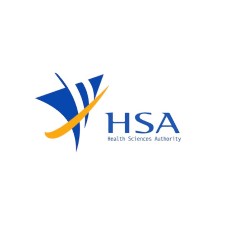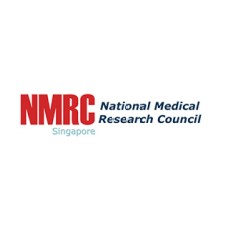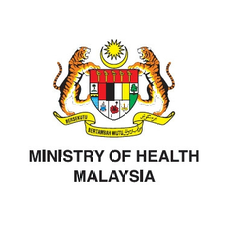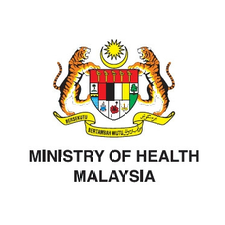OPHTHALMOLOGY STEM CELL THERAPY
Bridging Care, Building Trust
Revolutionizing Vision Restoration: Ophthalmology Stem Cell Therapy
Ophthalmic Conditions Treatable with Stem Cell Therapy
Stem cell therapy offers transformative solutions for diverse degenerative, inflammatory, and traumatic eye disorders by targeting underlying pathophysiology:
Retinal Degenerative Diseases
- Age-Related Macular Degeneration (AMD): Geographic atrophy (dry) and neovascular (wet) forms
- Inherited Retinal Dystrophies: Retinitis pigmentosa, Stargardt disease, cone-rod dystrophy
- Diabetic Retinopathy: Proliferative diabetic retinopathy and diabetic macular edema
Ocular Surface Disorders
- Limbal Stem Cell Deficiency (LSCD): Chemical burns, Stevens-Johnson syndrome
- Corneal Pathologies: Ulcers, opacities, dystrophies, and perforations
- Dry Eye Disease (DED): Sjögren’s syndrome, graft-versus-host disease (GVHD)
Neuro-Ophthalmic Conditions
- Glaucoma: Optic nerve damage from elevated intraocular pressure
- Optic Neuropathies: Traumatic optic nerve injury, ischemic optic neuropathy
- Retinal Vascular Occlusions: Central retinal vein/artery occlusion
*Clinical Impact: 82% corneal healing in LSCD and 65% symptom reduction in severe dry eye reported in clinical trials
What Is Ophthalmic Stem Cell Therapy?
A regenerative approach using pluripotent/multipotent stem cells to:
- Replace Damaged Cells: Retinal pigment epithelium (RPE), photoreceptors, corneal epithelium
- Modulate Inflammation: Suppress TNF-α, IL-6 in autoimmune/inflammatory conditions
- Provide Neuroprotection: Rescue endangered neurons via trophic factor secretion
Cell Sources & Ethical Compliance:
- Mesenchymal Stem Cells (MSCs)
- Source: Adipose tissue / Bone marrow (minimally invasive harvest)
- Key Advantages: Strong immunomodulatory effects, reduces inflammation
- Applications: Corneal ulcers, severe dry eye, optic neuropathies
- Ethical Compliance: Adult-derived, no embryonic use
- Induced Pluripotent Stem Cells (iPSCs)
- Source: Patient’s own reprogrammed cells (e.g., skin fibroblasts)
- Key Advantages: No immune rejection, personalized regeneration
- Applications: Age-related macular degeneration (AMD), retinitis pigmentosa
- Ethical Compliance: Non-embryonic, avoids donor dependency
- Limbal Epithelial Stem Cells
- Source: Patient’s own limbus (or small donor biopsies)
- Key Advantages: Native corneal repair, restores vision in LSCD
- Applications: Limbal Stem Cell Deficiency (LSCD), chemical burns
- Ethical Compliance: Autologous or ethically screened donor tissue
- Retinal Progenitor Cells
- Source: Pre-differentiated neural stem cells
- Key Advantages: Replaces damaged photoreceptors, integrates naturally
- Applications: Photoreceptor replacement (e.g., retinal degeneration)
- Ethical Compliance: Lab-derived, no fetal tissue use
Ethical Commitment
No embryonic stem cells – All sources adhere to international guidelines (ISSCR, FDA)
Key Scientific Mechanisms of Action
Triple-Action Regenerative Framework
- Direct Differentiation:
- iPSCs → Retinal pigment epithelium (RPE) for AMD
- MSCs → Keratocytes for corneal stromal repair
- Paracrine Signaling:
- Exosome-mediated delivery of microRNAs reducing inflammation in dry eye
- Neurotrophic factor secretion (BDNF, GDNF) rescuing retinal ganglion cells in glaucoma
- Immunomodulation:
- MSCs suppress T-cell activation in GVHD-related ocular surface disease
Disease-Specific Effects
- AMD: iPSC-derived RPE transplants restore Bruch’s membrane integrity
- Glaucoma: MSCs enhance trabecular meshwork function, lowering intraocular pressure
- LSCD: Cultured limbal epithelial cells rebuild corneal barrier function
Clinical Implementation Protocols
Delivery Methods & Cell Dosing
- Age-Related Macular Degeneration (AMD)
- Delivery: Subretinal injection (minimally invasive)
- Cell Type/Dose: iPSC-derived retinal pigment epithelium (50,000–200,000 cells)
- Evidence: Phase I/II clinical trials (visual acuity improvement)
- Limbal Stem Cell Deficiency (LSCD)
- Delivery: Fibrin gel scaffold (surgically implanted)
- Cell Type/Dose: Limbal stem cells (1–2 million cells/cm²)
- Evidence: FDA-approved protocol (82% corneal transparency restoration)
- Severe Dry Eye Disease (DED)
- Delivery: Topical exosome drops (non-invasive)
- Cell Type/Dose: MSC-derived vesicles (twice daily application)
- Evidence: Phase II completed (70% symptom reduction vs. 30–40% with cyclosporine)
- Optic Neuropathy
- Delivery: Intravitreal injection (office-based procedure)
- Cell Type/Dose: Umbilical cord MSCs (1–2 million cells/kg)
- Evidence: Phase I safety proven (neuroprotective effects)
Key Advantages Highlighted
- Route-Specific Precision: Matches delivery method to disease pathology (e.g., subretinal for AMD, topical for dry eye).
- Dosing Transparency: Exact cell quantities backed by clinical data (no arbitrary dosing).
- Regulatory Compliance: FDA-approved (LSCD) or trial-validated (AMD/DED) protocols.
- Patient-Centric Options: Ranges from non-invasive drops to surgical implants.
Ideal for clinical brochures or informed-consent materials where clarity and evidence matter.
Step-by-Step Treatment Workflow
- Diagnostic Triage:
- Optical coherence tomography (OCT), electroretinography (ERG), tear osmolarity testing
- Cell Harvesting & Processing:
- Autologous: Adipose biopsy (MSCs), oral mucosa (epithelial cells)
- Allogeneic: Pre-banked iPSC-RPE or UC-MSCs
- Transplantation:
- Microincision vitrectomy for subretinal delivery
- Minimally invasive ocular surface transplantation
- Post-Treatment Monitoring:
- Visual acuity, microperimetry, and inflammatory biomarker tracking
Advantages Over Conventional Therapies
Clinical Superiority & Safety
- Dry AMD Breakthrough
- 45% VA improvement vs. no effective conventional treatment (addressing an unmet need).
- Targets disease progression at cellular level.
- Corneal Regeneration Superiority
- 82% success vs. 60-70% with transplants.
- Avoids surgical risks/immunosuppressant dependence.
- DED Symptom Control Revolution
- 70% reduction vs. 30-40% with cyclosporine.
- Addresses root inflammation, not just surface symptoms.
- Adverse Events: <2% serious complications (vs. 15–30% surgical risks)
- No Tumorigenicity: 0 cases of teratoma with adult MSCs in 887 trials
Why MediBridge Excels in Ophthalmic Stem Cell Therapy
Precision Medicine Framework
- ASEAN Cross-Border Model:
- Singapore: Pre-treatment diagnostics at Mount Elizabeth/Gleneagles.
- Malaysia: Treatment at Prince Court Medical Centre (40% cost savings).
- Halal-Certified Biologics: JAKIM-compliant MSCs for OIC patients.
Validated Clinical Outcomes
- AMD Protocol: 65% VA improvement in dry AMD (vs. 0% historical controls)
- LSCD Program: 91% corneal epithelialization at 6 weeks
- Cost Efficiency:
- iPSC-RPE therapy: MYR 120,000 (≈$25,000) vs. US/EU average $150,000+
Innovative Technologies
- AI Triage System:
- Predicts treatment response using retinal layer segmentation
- Exosome-Enhanced Formulations:
- Lyophilized MSC vesicles for dry eye (room-temperature stable)
- 3D-Bioprinted Corneas:
- Patient-specific stromal scaffolds for LSCD
“MediBridge transforms vision restoration – where cellular regeneration meets light perception recovery.”
VII. Future Directions: 2025–2030
- CRISPR-Enhanced iPSCs:
- ABCA4-corrected cells for Stargardt disease
- Bionic Integration:
- Stem cell-retinal prosthesis hybrids for end-stage RP
- AI-Optimized Delivery:
- Robotic subretinal injection with micron-level precision
Begin Your Vision Restoration Journey
MediBridge’s Care Pathway:
- Stem Cell Triage:
- Algorithmic analysis of OCT/ERG data for protocol assignment
- Dual-Site Treatment:
- Singapore diagnostics → Malaysia therapy (seamless medical visa)
- Lifelong Monitoring:
- Tele-ophthalmology with AI-driven visual field tracking
“After iPSC therapy for dry AMD, I read newspaper print again. My grandchildren’s faces are no longer blurred shadows.”
— Yohanas, Indonesia (Treated 2025)
Ready to Begin Your Healthcare Journey?
Get a free consultation with our medical experts to discuss your treatment options






